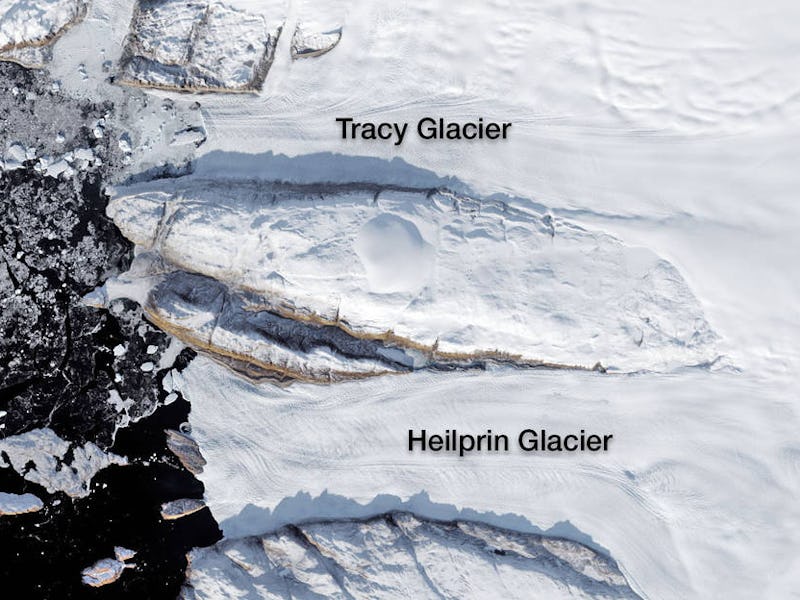NASA Discovered Why Greenland’s Glaciers Are Melting at Different Speeds
One of the oldest glacier mysteries is solved.

The Tracy and Heilprin glaciers have been observed by scientists since 1892, partially due to their mysterious nature. Even though the adjoining glaciers flow side by side and experience the same weather and ocean conditions, Tracy has melted nearly four times faster than its neighbor. But after years of testing, a new NASA study finally figured out why Tracy is suffering a worse fate than Heilprin.
NASA’s Ocean Melting Greenland — affectionately known as OMG — was a five-year campaign that documented the disparity between Tracy and Heilprin as they flowed in the Inglefield Gulf in northwest Greenland. NASA published the campaign’s findings in the journal Oceanography on Thursday, showing that Tracy and Heilprin’s initial similarities were just the tip of the iceberg.
In the 125 years that the two glaciers have been observed, Heilprin has retreated upstream less than 2.5 miles, while Tracy has retreated more than 9.5 miles. Past studies from NASA’s Operation IceBridge used ice-penetrating radar to discover that Tracy is seated on bedrock at a depth of 2,000 feet below the ocean surface, but Heilprin only extends 1,100 feet. This would contribute somewhat to Tracy’s increased melting rates since it’s a deeper glacier that is more exposed to Greenland’s warm water layer, which begins about 660 feet below the surface. And yet, most of Tracy’s disappearance has taken place at the top of the glacier.
Estimated ice flow velocities of Tracy and Heilprin glaciers (right) and the depths of the fjord in front of the glaciers.
“Most of the melting happens as the water rises up Tracy’s face,” said OMG Principal Investigator Josh Willis. “It eats away at a huge chunk of the glacier.” To get to the bottom of this puzzling contradiction, OMG sent a research boat into the Inglefield Gulf and discovered a warm-water plume flowing into Tracy and a cold-water plume passing through Heilprin.
At first, Willis’ team noticed a river of meltwater draining out from under Tracy. Because freshwater is more buoyant than the seawater, it swirls upward to the surface as soon as it escapes the glacier. That turbulent movement pulls in warmer subsurface water. As it gains volume, the plume spreads, meaning that the more Tracy’s underbelly melts, the more warm-water plumes attack the glacier’s surface.
Poor Tracy is caught in a vicious cycle that only seems to be picking up speed. OMG will continue to monitor the changes affecting the two glaciers with airborne surveys of the entire coastline, collecting data through 2020.
OMG’s findings mark the first time scientists had measured the effects of these plumes in Greenland. This discovery highlights the critical role of ocean patterns in glacial ice loss and will continue to be studied to better understand future sea level rise.